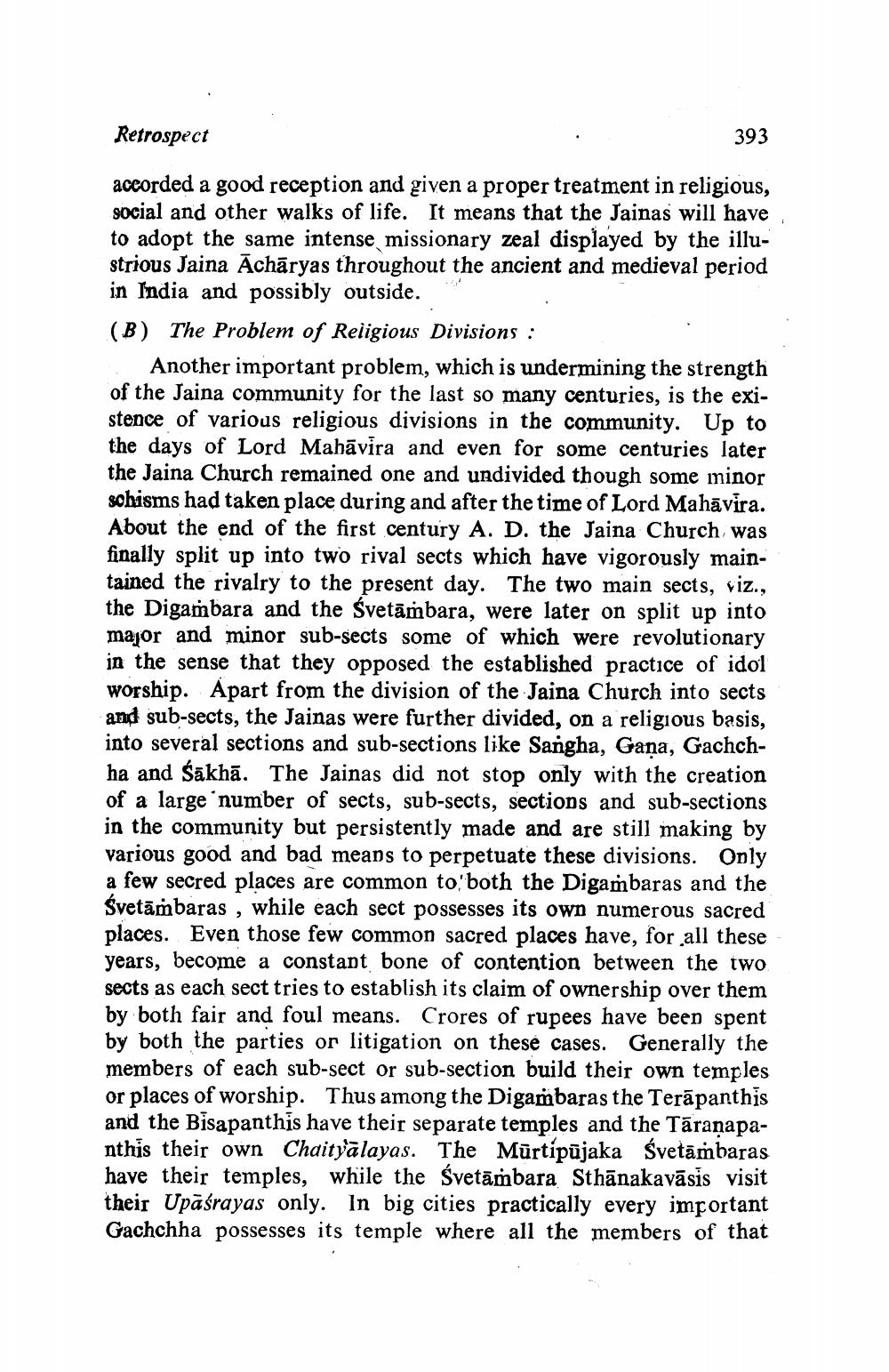________________
Retrospect
393
accorded a good reception and given a proper treatment in religious, social and other walks of life. It means that the Jainas will have to adopt the same intense missionary zeal displayed by the illustrious Jaina Āchāryas throughout the ancient and medieval period in India and possibly outside. (B) The Problem of Religious Divisions :
Another important problem, which is undermining the strength of the Jaina community for the last so many centuries, is the existence of various religious divisions in the community. Up to the days of Lord Mahāvira and even for some centuries later the Jaina Church remained one and undivided though some minor schisms had taken place during and after the time of Lord Mahāvira. About the end of the first century A. D. the Jaina Church was finally split up into two rival sects which have vigorously maintained the rivalry to the present day. The two main sects, viz., the Digambara and the Svetāmbara, were later on split up into major and minor sub-sects some of which were revolutionary in the sense that they opposed the established practice of idol worship. Apart from the division of the Jaina Church into sects and sub-sects, the Jainas were further divided, on a religious basis, into several sections and sub-sections like Sangha, Gana, Gachchha and Sākhā. The Jainas did not stop only with the creation of a large number of sects, sub-sects, sections and sub-sections in the community but persistently made and are still making by various good and bad means to perpetuate these divisions. Only a few secred places are common to both the Digambaras and the Svetāmbaras, while each sect possesses its own numerous sacred places. Even those few common sacred places have, for all these years, become a constant bone of contention between the two sects as each sect tries to establish its claim of ownership over them by both fair and foul means. Crores of rupees have been spent by both the parties or litigation on these cases. Generally the members of each sub-sect or sub-section build their own temples or places of worship. Thus among the Digambaras the Terāpanthis and the Bisapanthis have their separate temples and the Tāraṇapanthis their own Chaitālayas. The Mārtipājaka Śvetāmbaras have their temples, while the Śvetāṁbara Sthānakavāsis visit their Upāśrayas only. In big cities practically every important Gachchha possesses its temple where all the members of that




